#artandarchitecture
Photo
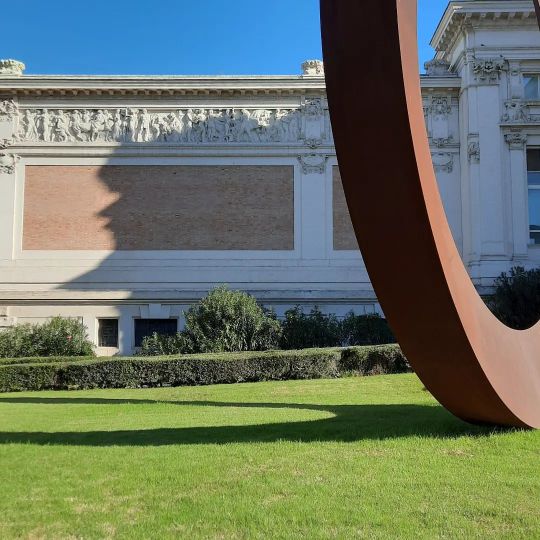
Galleria Nazionale di Arte Moderna #gnam #Roma #mariostaccioli #roma2010 #contemporaryart #sculturacontemporanea #artandarchitecture #industrial #mobilephotography #samsunga51 #samsungmobile #italiapm #lensculture #lensbrnetwork #originalphotographer #italiapm (presso Rome, Italy) https://www.instagram.com/p/CkqxxeEs9ch/?igshid=NGJjMDIxMWI=
#gnam#roma#mariostaccioli#roma2010#contemporaryart#sculturacontemporanea#artandarchitecture#industrial#mobilephotography#samsunga51#samsungmobile#italiapm#lensculture#lensbrnetwork#originalphotographer
2 notes
·
View notes
Photo

Musée Soulages, Rodez, France, 2014 RCR arquitectes 📷 @kevindolmaire #architecture #architecturemuseum #rcrarquitectes #arch #cortensteel #musée #rodez #pierresoulages #artandarchitecture #art_chitecture #art_chitecture_ #architecturephotography #architecturalphotography #arquitectura #architecturedaily #architecturelovers Follow #designstudiomag 🤝 @designstudio_mag (presso France) https://www.instagram.com/p/CfCOkEJNq8N/?igshid=NGJjMDIxMWI=
#architecture#architecturemuseum#rcrarquitectes#arch#cortensteel#musée#rodez#pierresoulages#artandarchitecture#art_chitecture#art_chitecture_#architecturephotography#architecturalphotography#arquitectura#architecturedaily#architecturelovers#designstudiomag
2 notes
·
View notes
Photo
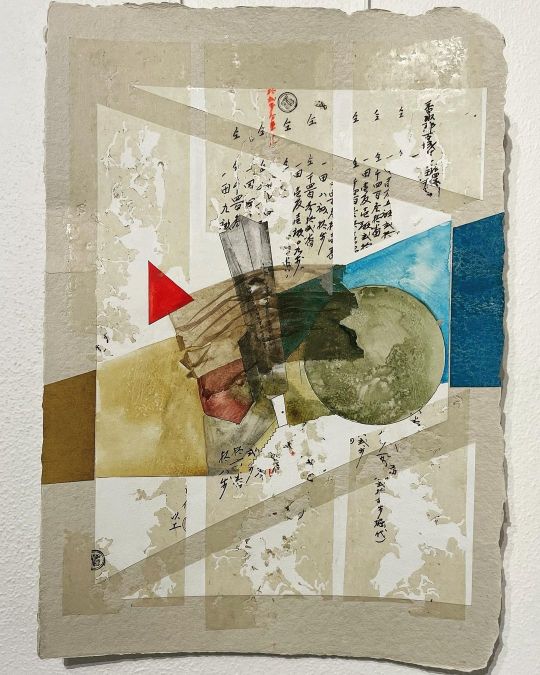
My ‘Incineratorscapes’ series 2021-2 (Triangle, Square, Circle) triptych - thank you to a collector who acquired all 3 from the ‘Architecture and Beyond’ exhibition, June 2022 at The Incineratorscape Art Space in Willoughby. 🙏🏽🙏🏽🙏🏽 #architectureandbeyond #jolibeol #lisapang #artandarchitecture (at The Incinerator) https://www.instagram.com/p/CeyWt3gB_pk/?igshid=NGJjMDIxMWI=
2 notes
·
View notes
Text
Splitting

Gordon Matta-Clark, Splitting (1974). Super-8 film, black-and-white and colour, silent, 10:50 min., transferred to video.
Gordon Matta-Clark, trained as an architect at Cornell University, transitioned into an artist renowned for his transformative interventions into derelict urban spaces. Splitting (1974) stands as one of his pioneering works, where he sliced a suburban New Jersey house in two, creating a radical sculptural environment that challenged traditional notions of architecture and space.
A Monumental Act of Subversion:
In the economically depressed and crime-ridden New York City of the 1970s, abandoned buildings were abundant. Matta-Clark's artistic vision led him to explore these neglected structures, seeking to unearth hidden narratives and possibilities within them. Splitting emerged from this exploration, as he received permission from art dealer Holly Solomon to carve into her suburban New Jersey house, slated for demolition.
The Artistic Process Unveiled:
With the assistance of craftsman Manfred Hecht and other helpers, Matta-Clark executed his audacious plan. Using a power saw, they bifurcated the house, meticulously jacking up one side to create a slender central gap, allowing sunlight to filter into the newly revealed spaces. The resulting sculptural environment disrupted conventional architectural forms, inviting viewers to reconsider their relationship with built environments.
Revealing New Vistas and Passages:
Matta-Clark's "cuttings" series, including Splitting, challenged the established boundaries of architecture, merging traditional sculptural elements with contemporary concerns of urban decay and social structures. By slicing shapes into walls and floors, he transformed stagnant spaces into dynamic vistas, liberating individuals from suburban isolation and revealing the hidden layers of domesticity.
The Temporal Nature of Artistic Intervention:
Despite its monumental impact, Splitting was destined to be ephemeral. Demolished three months later to make way for new apartments, it exists now primarily through documentation: photographs, sketches, an artist's book, and a film capturing the transformative act of architectural-sculptural performance. Matta-Clark's legacy lives on not only in the physical remnants of his interventions but also in the enduring dialogue they provoke about the nature of art and space.
Unravelling Spatial Perspectives:
How does Gordon Matta-Clark's Splitting challenge your perceptions of architecture and space, and what implications does it hold for contemporary discussions about urban development and artistic intervention?
#GordonMattaClark#Splitting#UrbanIntervention#ArchitecturalSubversion#ArtisticTransformation#SpatialExploration#EphemeralArt#ContemporaryArt#ArtAndArchitecture#SocialCommentary#UrbanDecay#ArtisticInnovation#ArtHistory#ArtBloggers
1 note
·
View note
Text

"Facade of Deception: Sackler Gallery, Anagrams, and the Opioid Controversy"
From 'Serpentine' to 'In Pretense,' the anagram unfolds a narrative of pretense—feigning or pretending, a theme echoed in the juxtaposition with the Serpentine Sackler Gallery in London. This contemporary art center, an architectural marvel designed by Zaha Hadid, houses both historical restoration and futuristic expansion, creating a dynamic blend of 19th-century and 21st-century architecture.
The historic building, once a gunpowder store, underwent meticulous restoration while adding a curvilinear expansion that stands as an example of tensile architecture. The result is a visually striking venue with barrel-vaulted rooms and a modern pavilion surrounded by glass panels, creating an ethereal space filled with natural light.
However, beneath this architectural beauty lies a controversy tied to the benefactor—the Sackler family. The Sacklers, known for their philanthropy, particularly in the arts, have faced scrutiny and legal action due to their association with Purdue Pharma, the manufacturer of OxyContin. The opioid epidemic, with almost half a million lives lost, has prompted allegations of fraud and profiteering against the Sacklers.
The cultural epidemic extends beyond the realms of architecture and art to the pharmaceutical industry, revealing the deceptive facade that conceals the darker impact of opioid addiction. The serene ambiance of the Sackler Gallery stands in stark contrast to the pain and controversy surrounding the family's alleged role in the crisis.
As we explore the intricate details of art, architecture, and pharmaceuticals, the narrative unfolds, revealing the complexities of a cultural epidemic. It prompts us to question the intersections of creativity, commerce, and ethics, urging a deeper examination of the art world's ties to industries with profound societal implications.
#SerpentineSackler#OpioidControversy#ArtandArchitecture#CulturalEpidemic#SacklerFamily#ZahaHadid#TensileArchitecture#DeceptiveFacade#architecture#london#area
1 note
·
View note
Photo

modern living From a walk through Hamburg's IBA exhibition.
Discover the essence of modern living at Hamburg's IBA exhibition, where innovation meets architectural prowess
0 notes
Text
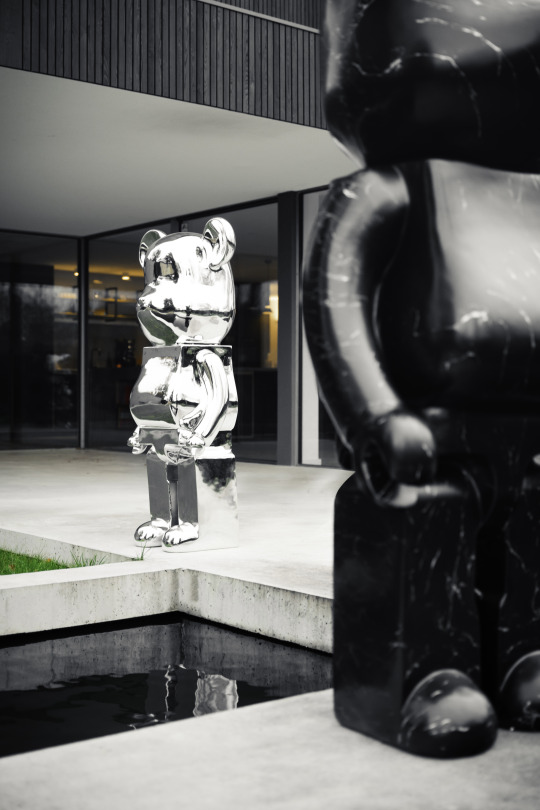
Reflections and Revelations with Giant Bears Sculptures
Cast in the glow of architectural grace, our Giant Bears sculptures stand as sentinels of style.
Witness how the sleek Chrome Bear captures the essence of its surroundings, reflecting the world in its polished sheen, while its Black Stone counterpart grounds the scene with its profound presence.
Together, they offer a study in contrast and a revelation in design. 🐻
#giantbears#modernsculpture#artandarchitecture#homeinterior#designinspo#artisticexpression#chrome#blackmarble#interiordesign#modernart#minimalist#homeaccent#sculpture#contemporarydesign#boldart#sleekdesign#luxurydecor#artinstallation#decorinspo#architecturalart
1 note
·
View note
Text
🌆 When Architecture Meets Drama: An Artistic Exploration 🌩️
Buildings are often seen as static entities, but what happens when you add dynamic elements like stormy skies and dramatic lighting? The result is a visual experience that goes beyond just "looking at a building."
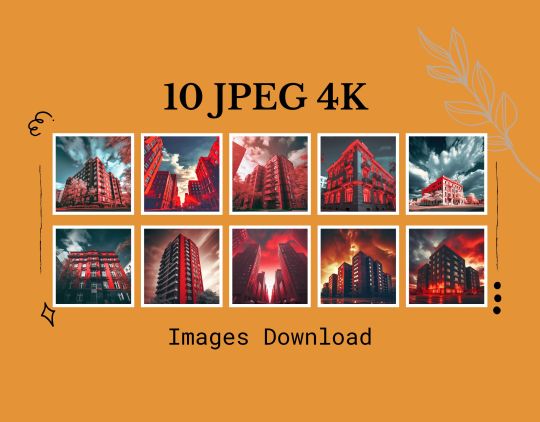
🎨 Love this kind of art? Drop a comment or follow my account for more inspiring content!
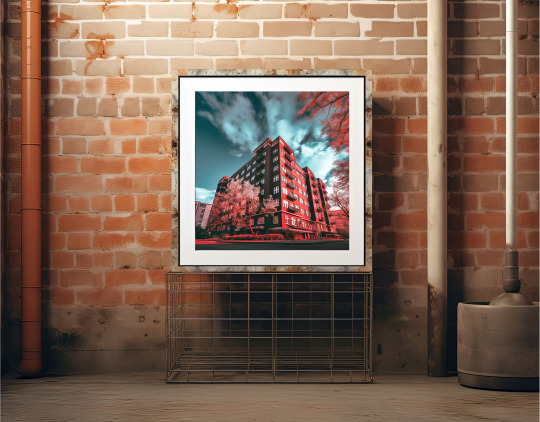
#ValHeyrie404#ArtAndArchitecture#DramaticSkies#UrbanScapes#ModernVsHistoric#ArtisticPerspective#BoldColors#ContrastGame#homedecor#art mural#midjourney#art numérique#téléchargement instantané
0 notes
Text
Historians Hate This One Fact About Ancient Fu Dog Statues

Introduction to Fu Dog Statues

Kicking off the captivating tale of the Foo Dog statue, it's important to delve into its roots. Foo Dogs, known as 'Fu Dogs', are classic symbols in Chinese culture, embracing history, craftsmanship, and vibrant folklore. These distinctive statues, formidable yet protective, are traditional elements gracing the entrances of temples, palaces, and homes in China. The statues depict mythical beasts that have an intrinsic appeal due to their rich symbolism and intriguing history, dating back to the Han Dynasty.
Typically, Foo Dog statues look like lions and are often called Chinese guardian lions in the west. This unique lion-like creature, which does not exist in the natural world, combines the formidable fearlessness of a lion with the loyal protectiveness of a dog. It's a potent and fascinating symbol in Chinese culture, amalgamating different elements that appeal to various life aspects.
These sculptures serve multiple purposes, including warding off negative energies, safeguarding spaces, and acting as a talisman for good fortune. Embarking on the exploration of the Foo Dog statue's history, design, and cultural impacts, one uncovers ancient legends and stories that reiterate its timeless value in Chinese culture.
Key Takeaways: Fu Dog Statues
- Fu Dog Statues, also known as Chinese Guardian Lions, have origins dating back to the Han Dynasty.
- These statues are not just artistic pieces but carry deep symbolism of protection, prosperity, and balance in Chinese culture.
- The male and female Fu Dogs represent different aspects, with the male symbolizing dominance and the female symbolizing nurture.
- Fu Dogs play a significant role in Feng Shui, believed to ward off negative energy and bring good luck.
- These statues have been adopted in various Asian cultures and have influenced Western art and architecture.
- A lesser-known fact is the transition of Fu Dog Statues from traditional materials to ceramics during the Tang dynasty, reflecting a cultural shift.
- Fu Dogs are often placed in pairs at entrances of temples and homes, serving as guardians against evil spirits.
- Their global popularity underscores their universal appeal and the widespread appreciation of Eastern cultures.
Definition and Origins

Fu dogs, often known as foo dogs, trace their origins back to the Han dynasty (206 BC - 220 AD) of China. Enigmatic yet captivating, they are not dogs at all, but rather powerful ancient Chinese protective symbols. They are depicted as majestic lion statues, drawing from the Asian cultural reverence for lions as the king of beasts and a symbol of power and protection.
The foo dog lion statue is a fascinating fusion of Buddhist and Taoist cultural influences. It represents the sacred animal lion from Buddhist folklore and embodies the Taoist principles of Yin and Yang, balance and harmony. To the untrained eye, fu dogs may appear identical; however, subtle differences distinguish the male and female figures, symbolizing the complementary forces of Yin and Yang.
Purpose and Symbolism

The foo fu dog statue, prominently visible in the East, is rich in purpose and symbolism. These statues originated from China's Han dynasty, drawing inspiration from ancient lion-based mythology. They were not just mere pieces of art but served an essential function in Chinese society. Their purpose was both spiritual and aesthetic, as these majestic and intricate sculptures were intended to protect individuals and their households from malevolent spirits and people.
Symbolism runs deep in foo fu dog statues. The pair usually consists of a male lion playing with an embroidered ball, symbolic of supremacy over the world, and a female lion nurturing a cub under her paw, representing the cycle of life. The grotesque yet profoundly artistic facial expressions are an embodiment of courage and fearlessness, warding off evil entities.
They also represent power, prosperity, and success, which is why they are ubiquitous in significant structures and residences. Thus, these statues are more than ornamental; they reflect the deeply ingrained Chinese philosophies about balance, protection, and the cyclical nature of life.
The foo fu dog statues are not just pieces of art, but they carry a heavy weight of purpose and symbolism that is deeply rooted in Chinese culture. These statues were originally created during the Han dynasty and have been used for centuries as symbols of protection and prosperity.
• The primary purpose of these statues was to serve as protectors. They were placed at entrances to buildings or homes to ward off evil spirits and people with malicious intent. This protective function is reflected in their fierce facial expressions which embody courage and fearlessness.
• In addition to their protective role, foo fu dog statues also served an aesthetic function. Their intricate designs make them visually appealing, adding a touch of elegance and majesty wherever they are placed.
• Symbolically, the male lion playing with an embroidered ball represents supremacy over the world while the female nurturing a cub under her paw symbolizes life's cyclical nature.
• Another layer of symbolism comes from their appearance; despite being grotesque, these sculptures embody power, prosperity, success - qualities highly valued by Chinese society.
In conclusion:
- Foo Fu Dog Statues represent more than ornamental figures; they reflect profound Chinese philosophies about balance, protection, life cycles.
- Despite having originated several centuries ago during China's Han Dynasty these majestic sculptures remain relevant today due to their deep-rooted significance.
- Their ubiquity in significant structures across East Asia testifies not only to their cultural importance but also underscores how integral these beliefs continue to be within contemporary societies.
Historical Significance
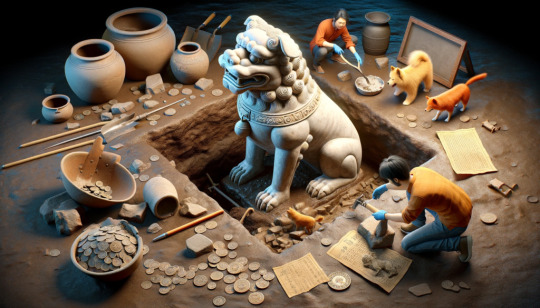
The prominence of the Fu dog, or, more accurately termed, the fu lion statue, can be traced back to Imperial China. Both the Han and Tang dynasties showcased them predominantly, but their significance grew much further during the Ming and Qing dynasties. During these eras, they were seen as the epitome of imperial power, courage, and regality, often strategically placed in important political and religious institutions. Notably, several imperial tombs were adorned with these statues, believed to guard the souls of the deceased rulers against evil and harm in the afterlife.
Han horse-shaped pottery covered with Fu lion designs reveals their artistic significance, highlighting their extensive use as motifs in pottery, paintings, tapestry, and architecture. The fu lion statue also boasted an immense artistic value, symbolizing prosperity and success, often given in the form of gifts to bestow good fortune.
As the culture diffused, so did the prevalence of these statues, spreading across other Asian nations and beyond. Today, they continue to signify courage, prosperity, and protection, maintaining their historical reverence. Their visually captivating aesthetics and deep cultural roots have played an influential role in tastefully blending the past with the present, retaining their historical significance over the centuries.
The Mysterious History of Fu Dogs

Diving deep into the annals of China’s rich and profound history, one will invariably cross paths with numerous stories and legends surrounding large Foo Dog statues. These mystical beasts, also known as Chinese guardian lions, have captivated the interests of scholars, historians, and art enthusiasts alike. Their impressive historical presence in Chinese culture dates back to the Han Dynasty (206 BC–220 AD).
Thought to have profound protective abilities, these large Foo Dog statues were a common sight at imperial palaces, tombs, temples, and homes of nobility. These majestic sculptures served not only as exquisite pieces of art but also as totems believed to ward off menacing spirits.
However, beyond the visual grandeur of large Foo Dog statues, lies a trove of inconceivable mysteries and untold stories waiting to be unearthed. The origins of these mythical creatures have always been a subject of debate, considering how deeply they have been embedded in Chinese folklore and mythology. Some theories suggest that they were inspired by Indian culture, while others propose their roots in Persian or Greek art.
Ancient Chinese epics discuss them as celestial beings, while many believe they were modeled after native dogs—one has to carefully sift through the layers of history to discern the factual evidence from myths. Nonetheless, the fascination with their undeniable historical significance keeps the enigma of Foo Dogs alive in the hearts of historians, writers, and beholders alike.
Ancient Chinese Legends
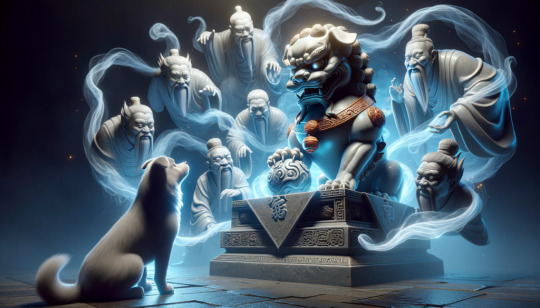
Steeped in deep traditions and narrated through generations, the folklore and legends surrounding the Chinese Foo Dog statues hold an exceptional mystique in ancient Chinese legends. They are not simply decorative sculptures but hold enormous cultural and symbolic significance.
It is said that these ancient guardians originated from the Han Dynasty, around 206 BCE to 220 AD. An intriguing aspect of these legends is that despite their commonly referred name 'Fu Dogs,' they are not dogs at all. Instead, they are mythical beasts, known in Chinese as Shi, symbolizing power and protection.
In ancient Chinese legends, Shi were believed to have an incredibly protective nature and the presence of their statues were seen as potent filters of bad fortune or malicious spirits. They stood as markers of divine power and protection at the gates of imperial palaces, government offices, temples, tombs, and homes of the affluent.
The distinctive features of the Chinese Foo Dog statues, with their menacing expressions and imposing physique, depict a fierce protective spirit. Their legend summons an image of fearless defenders and guardians, an enduring aspect that has been etched deeply in the legacy of ancient Chinese folklore.
Fu Dog Mythology and Folklore

Immerse deeply into the heart of Chinese folklore, and you'll encounter many tales centering around outdoor Fu Dog statues. Also known as Fu dogs or Lion dogs, these creatures have an enticing blend of the lion's majestic power and the loyal canine's protective spirit. Outdoor Fu Dog statues have a strong symbolic presence in many narratives, often credited with warding off evil spirits and welcoming positive energy at the entrances of homes and temples. This is why they are frequently seen as an essential part of Chinese architectural aesthetic, with prominence at the gate of monasteries, temples and palaces, as well as private villas and estates.
The folklore surrounding these mythical beings is rich and varied. Some stories depict them as menacing creatures whose sole purpose is to scare away evil spirits. Others portray them as nurturing creatures connected with fertility and abundance. The Fu dogs, usually depicted in pairs, are thus seen as the perfect balance of yin and yang energies, representing the dual forces that harmoniously regulate the universe's movement.
Often, the male Fu dog is portrayed playing with a ball, symbolizing the world's unity, while the female Fu dog is seen with a cub, symbolizing the cycle of life. Such visual storytelling invokes a sense of wonder, effortlessly tying together elements of nature, cosmology, and human existence in a beautifully succinct pictorial narrative.
Archaeological Evidence

Archaeological excavations in China have provided a trove of clues regarding the history and significance of the Fu Dog or Guardian Lion across various dynasties. Notably, amongst various artefacts, jade foo dogs have emerged as a recurrent theme, standing out for their intricate craftsmanship and rich symbolic value. The earliest evidence of jade foo dogs dates back to the Han Dynasty (206 BC–220 AD), when the practice of carving religious and mythological figures from jade was flourishing. Some historians speculate that the jade foo dogs of the Han era were not just objects of beauty, but also spiritual talismans believed to ward off evil spirits and bring prosperity.
In recent times, the Mausoleum of the Nanyue King in Guangzhou City, unearthed a significant number of jade artifacts including jade foo dogs, dated back to the Western Han period. These discoveries, carefully preserved and studied, help us understand the antiquity of foo dogs in Chinese culture as well as underlying historical craftsmanship techniques.
Further, it sheds light on the socio-cultural dynamics of the period, indicating how such artifacts were predominantly associated with power and protection. The meticulous detailing of these jade foo dogs underscores the high level of finesse that ancient Chinese artisans possessed and the symbolism that such artifacts carried in their era.
The Fact Historians Don't Want You to Know

Despite the well-documented history of Fu Dogs in Chinese culture and tradition, there exists a lesser-known fact that ceramic sculptures of these creatures carry a unique significance. When Fu Dog statues first appeared, they were made from bronze, stone, or wood, attributing to both the artistry and the resources available during the different dynasties. However, the craft saw a significant revolution at the onset of the Tang dynasty when foo dogs ceramic gained widespread popularity.
The rise in the foo dogs ceramic during the Tang dynasty is said to be due to the technological advancements in pottery, and ceramics at that time. Simultaneously, this trend reflected the increasing openness of Tang society, gradually moving away from the rigidly hierarchical Shang and Zhou societies and expressing this liberal phase through its art forms.
This historical shift, though quite compelling, is often understated, possibly because it disrupts the more engrained narrative of Fu Dogs as symbols of imperial power and authority. Instead, it highlights a period of evolution, when societal changes influenced art and culture in profound ways. This transformation is encapsulated in the transition from using traditional materials to ceramics for Fu Dog statues, a fact intriguingly unknown to many.
Fu Dog Design and Craftsmanship

Fu Dog Statues are distinguished by a meticulously detailed design and superior craftsmanship. This intricacy can be attributed to the centuries-old Chinese tradition of stone carving and pottery-making. The exquisite detail of Fu Dogs, from their curly mane to the wide-open jaws displaying sharp teeth, embodies not just aesthetics, but also folklore and mysticism tied to the creature.
The common physical features of Fu Dogs include a lion-like appearance, a bushy tail, and a protective and fierce demeanor. Often the Fu Dog sculpture depicts a pair, comprising one male with a ball under his paw (symbolizing the world's unity) and one female, with a cub under her paw (symbolizing nurture and the cycle of life).
Stylistic variations of Fu Dogs vary greatly based on region and era. Despite this, elements like the paw on the symbolic objects, aggressive expressions, and muscular, lion-like bodies remain constant in traditional designs. Fu Dogs are typically carved from marble, jade, bronze, or wood. Every material has its own significance, from purity symbolized by Jade to strength and durability associated with Bronze and Wood.
Sometimes the statues are enhanced with more detailed ornamentation, Oftentimes, the statues are painted or gilded to make them more visually striking. These intricacies in design and craftsmanship highly contribute to Fu Dogs' appreciation as exquisite pieces of art and cultural symbols.
Common Physical Features

Fu Dog statues are typically portrayed as majestic and ferocious mythical beasts, reflecting a harmonious blend of strength, elegance, and spirituality. The most universally recognized physical attributes consist of a bulging, muscular body, thick mane, and widely-opened jaws that reveal sharp, imposing teeth. They are typically shown with one foot raised and placed on an object. This object varies - it might be a cub depicting nurturance if the creature is female, or a ball symbolizing command and authority if the creature is male.
Coupled with the captivating presence of finely detailed fur, the piercing eyes of Fu Dogs contribute to their grandiosity, giving them an aura of wisdom curled with intensity. Another characteristic element of Fu Dogs is the vibrant and intricate adornments and the surface etchings on them.
Read the full article
#ancientChina#artandarchitecture#Asianart#Chineseculture#ChineseGuardianLions#Chinesemythology#culturalheritage#Easternphilosophies#FengShui#FuDogStatues#FuDogStatueshistory#globalinfluence#guardianlions#HanDynasty#TangDynasty
0 notes
Text
#artandarchitecture#architecture#art#contemporaryart#interiordesign#design#architecturephotography#doorsandwindows#artcollector#archdaily#artist#abstractart#artanddesign#modernart#architecturelovers#architect#sculpture#photography#meyers#interior#ig#archilovers#artwork#conceptualart#painting#artconsultant#architecturedesign#geometricart#moma#modernism
1 note
·
View note
Photo
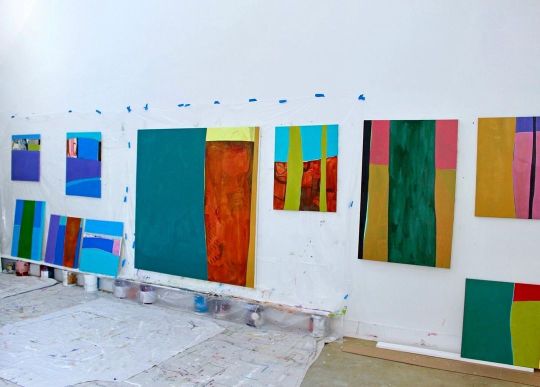
Studio shot of Land and Sea paintings. I tend to get in these modes of production and then need to step back and reflect. Doing that today! #reflection #studio #landandsea #lisakellner #inthestudio #paintings #contemporary #artandarchitecture #visualresearch #geometricabstraction #natureabstract #artsy #artanddesign #reductive https://www.instagram.com/p/Coup2suLNxt/?igshid=NGJjMDIxMWI=
#reflection#studio#landandsea#lisakellner#inthestudio#paintings#contemporary#artandarchitecture#visualresearch#geometricabstraction#natureabstract#artsy#artanddesign#reductive
0 notes
Photo

Galleria Nazinale di Arte Moderna #gnam #Roma #Gorilla #daviderivalta #artandarchitecture #sculturacontemporanea #contemporaryart #originalphotographer #mobilephotography #samsungmobile #samsunga51 #lensculture #lensbrnetwork #italiapm (presso Rome, Italy) https://www.instagram.com/p/CkqxX6gMRDn/?igshid=NGJjMDIxMWI=
#gnam#roma#gorilla#daviderivalta#artandarchitecture#sculturacontemporanea#contemporaryart#originalphotographer#mobilephotography#samsungmobile#samsunga51#lensculture#lensbrnetwork#italiapm
2 notes
·
View notes
Photo

studio sighting…& other stuff • • • • • #adreonhenryart #texasart #architecture #contemporaryart #austintxartist #art #artwork #artoftheday #artoninstagram #graphic #artandarchitecture #designerdreams #texasartist #houstonart #austinart #dallasart #photography #newart #culture #artstudio #artcommission #stripes #designer #circleart #hitme Land of 1000 Surprises First 📸 @rimmegart , others=phone feed (at Texas) https://www.instagram.com/p/CiN2tiBpb_R/?igshid=NGJjMDIxMWI=
#adreonhenryart#texasart#architecture#contemporaryart#austintxartist#art#artwork#artoftheday#artoninstagram#graphic#artandarchitecture#designerdreams#texasartist#houstonart#austinart#dallasart#photography#newart#culture#artstudio#artcommission#stripes#designer#circleart#hitme
0 notes
Link
Chalukyas Political History | Modern Indian History | Ghori | TSPSC/APPSC/UPSC | Tone Academy This video takes us through the following: - Vikramaditya-1 - Vijayaditya - Vikramaditya-2 - Architecture of the Chalukyas * Cave Temples * Structural Temples * Sites #chalukyas #politicalhistory #modernindiahistory #toneacademy Subscribe to Tone Academy : https://bit.ly/2YQOgbs Our Channel Playlists:- Indian Geography -http://surl.li/cnoau Arithmetic - http://surl.li/cnoaz Polity - http://surl.li/cnobd Reasoning - http://surl.li/cnobj Telangana Movement - http://surl.li/cnobl Modern Indian History - http://surl.li/cnobm Science And Technology - http://surl.li/cnobp Indian Economy - http://surl.li/cnobu
#MedievalIndia#DeccanStyle#artandarchitecture#Chalukyas#BadamiChalukyas#BadamiChalukyaRulers#Vikramaditya1#Vijayaditya#Vikramaditya2
0 notes
Photo
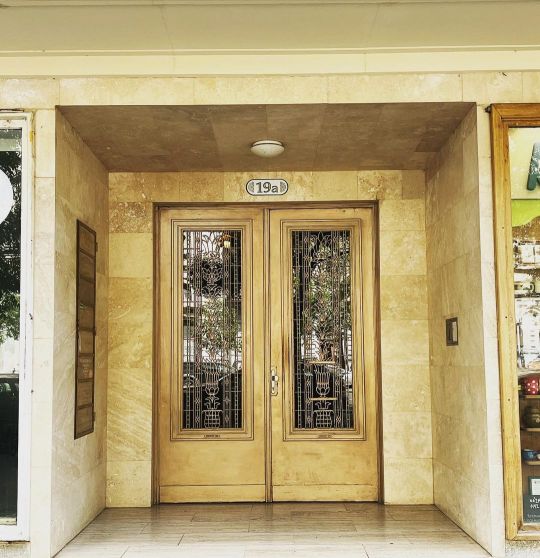
Most elegant #door of the day. #morningwalk #budapest #igbudapest #ighungary #artandarchitecture (at Budapest, Hungary) https://www.instagram.com/p/Cf4Y1KKIKqK/?igshid=NGJjMDIxMWI=
0 notes
Text
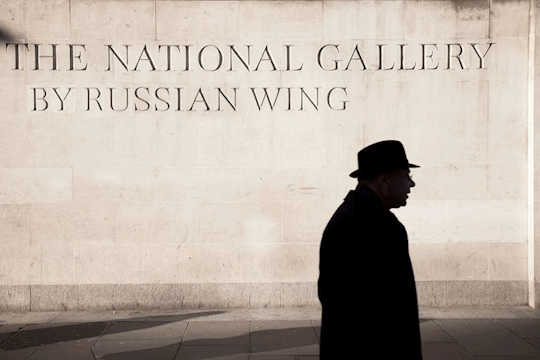
"Building Narratives: Sainsbury Wing, Avant-Garde Anagrams, and the Echoes of Conflict"
In recent years, the National Gallery witnessed a transformative addition, the Sainsbury Wing, conceived by postmodernist architects Robert Venturi and Denise Scott Brown. Erected in 1991, this wing stands as a testament to architectural evolution and houses a remarkable collection of Renaissance paintings. Its origin story traces back to the "Hampton's site," once occupied by a department store obliterated during the Blitz.
The expansion sought prominent architects, triggering a competition in 1982 that saw visionary proposals, including a radical high-tech concept by Richard Rogers. Ultimately, Ahrends, Burton, and Koralek secured the winning design, further modified to include a tower. However, controversy arose when the Prince of Wales critiqued it as a "monstrous carbuncle on the face of a much-loved and elegant friend." This term has endured as a metaphor for buildings that clash with their surroundings.
The initial condition of the 1982 competition mandated commercial offices within the new wing. Yet, a pivotal donation of nearly £50 million from Lord Sainsbury and brothers Simon and Sir Tim Sainsbury in 1985 allowed a revision, allocating the extension solely for the Gallery's use.
Delving into anagrams, 'Sainsbury' intriguingly transforms into 'By Russian,' invoking the avant-garde, a radical movement in Russian modern art from 1890 to 1930. This era, marked by innovation and cultural shifts, finds resonance in the deliberate carving of stone letters within our institutional structures.
However, the narrative takes a contemporary twist as we consider the echoes of the ongoing Ukraine war with Russia. The juxtaposition of 'By Russian' in the context of avant-garde art and architecture prompts introspection. How do our institutional foundations, once influenced by avant-garde ideals, now grapple with the geopolitical complexities of our age? The stone letters, once emblematic of artistic rebellion, now find themselves in a world grappling with the impacts of conflict.
This architectural journey serves as a lens through which we explore not only the evolution of our cultural institutions but also the subtle ways in which art, architecture, and geopolitics interlace, shaping the narrative of our times.
#BuildingNarratives#SainsburyWing#AvantGardeAnagrams#NationalGallery#ArtandArchitecture#CulturalEvolution#Geopolitics#UkraineWar#RussiaConflict#InstitutionalFoundations#ContemporaryNarratives
0 notes